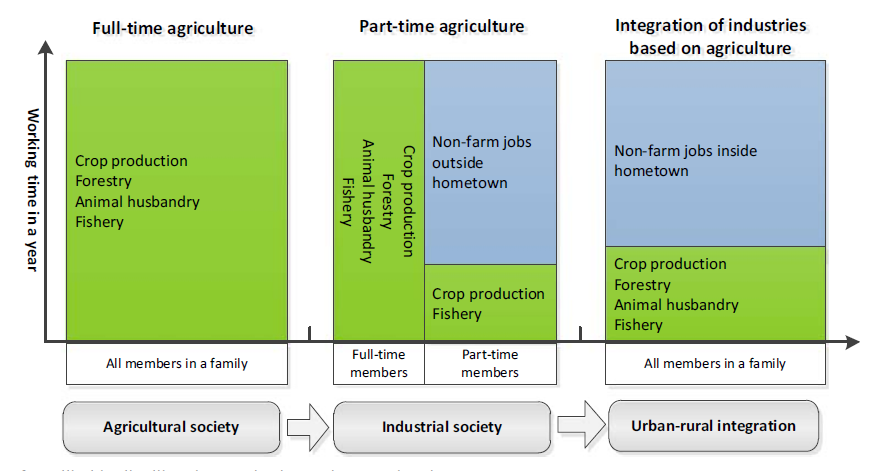Research of Labor Productivity of Small-scale Agriculture in Hani Terraces Explains Economic Sustainability of Small-scale Agriculture in Mountainous China
Small-scale agriculture (SA) is regarded as unsustainability all the time because of its low benefit under the context of industrialization and urbanization. The problem of who will farm in the future has been concerned for several decades in China. However, small-scale agriculture still continues. Especially, those terraces in mountainous areas that would be abandoned according to some people’s judgment are still maintained well by small holders nowadays.

Based on the background, researchers take the family as a basic unit and SA in Hani terraced region as an object to explore its sustainability from the perspective of labor productivity (LP). Researchers conducted lots of questionnaire to peasant households in Hani terraces. The findings are that peasant households work on both farm and non-farm jobs. Peasant households get 8% of income (3854.5 yuan RMB) from hybrid-rice-cropping and 92% of income (44,665.8 yuan RMB) from non-farm jobs. But they just spend 6% of labors (34.23 person•days) in growing hybrid-rice and expended 94% of labor (522 person•days) for non-farm jobs. In conclusion, LP of hybrid-rice-cropping is 1.32 times that of non-farm jobs for a household. The result shows SA in Hani terraced region has a higher return of labor investment than non-farm jobs. It is different from the common impression of the low benefit of SA and also explains why SA still continues to exist in the mountainous area in China now.
There is no doubt, SA in Hani terraced region also faces challenges with salary level rise of non-farm jobs and part-time farmers’ requirement for living quality improvement. In the future, promoting industrial integration development in this region to add local employment for improving farmers’ income is a necessary approach, which drives part-time agriculture in Hani terraced region to change integration of industries based on agriculture.

Supported by ASTIP program of CAAS (No. CAAS-ASTIP-IAED-2020-06), the article entitled Labor productivity of small-scale agriculture and its influence on agricultural landscape conservation in mountainous areas in China: a case study of rice farming in Hani terraced region completed by the Innovation group of International Agricultural Economics and Trade at Institute of Agricultural Economics and Development of CAAS was published in Environmental Science and Pollution Research (5-year if = 3.306).
More details can be found at the link below:
http://link.springer.com/article/10.1007/s11356-020-08815-z
By Zhang Yongxun (zhangyongxun@caas.cn)
-
 Apr 18, 2024Opening Ceremony of the Training Workshop on Wheat Head Scab Resistance Breeding and Pest Control in Africa Held in CAAS
Apr 18, 2024Opening Ceremony of the Training Workshop on Wheat Head Scab Resistance Breeding and Pest Control in Africa Held in CAAS -
 Apr 03, 2024IPPCAAS Co-organized the Training Workshop on Management and Application of Biopesticides in Nepal
Apr 03, 2024IPPCAAS Co-organized the Training Workshop on Management and Application of Biopesticides in Nepal -
 Mar 28, 2024Delegation from the School of Agriculture and Food Science of University College Dublin, Ireland Visit to IAS, CAAS
Mar 28, 2024Delegation from the School of Agriculture and Food Science of University College Dublin, Ireland Visit to IAS, CAAS -
 Mar 25, 2024Director of World Food Prize Foundation visited GSCAAS
Mar 25, 2024Director of World Food Prize Foundation visited GSCAAS -
 Mar 20, 2024Institute of Crop Sciences (ICS) and Syngenta Group Global Seeds Advance Collaborative Research in the Seed Industry
Mar 20, 2024Institute of Crop Sciences (ICS) and Syngenta Group Global Seeds Advance Collaborative Research in the Seed Industry
